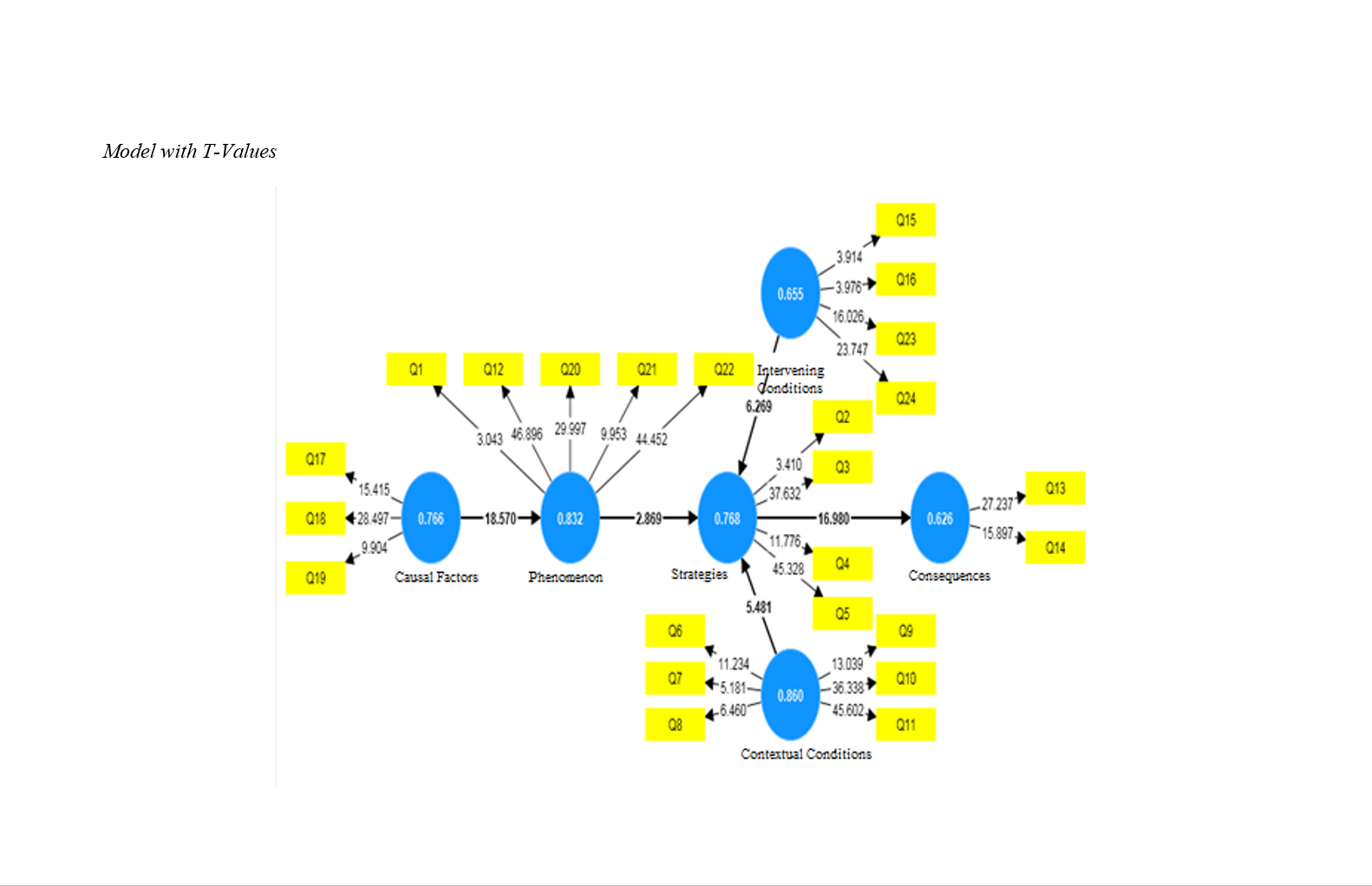Presenting a Model of Managers' Behavior in the Digital Age with a Structural Equation Modeling Approach in Petrochemical Companies
Keywords:
Managers' behavior model, Digital age, Structural equation modeling approachAbstract
Objective: The purpose of this research was to present a model of managers' behavior in the digital age using a structural equation modeling approach in petrochemical companies. It was a behavioral model for managers in the digital age utilizing structural equation modeling. The research methodology was applied in purpose and exploratory in nature.
Methodology: The research method was quantitative-descriptive and applied in objective. The study population consisted of managers of petrochemical companies affiliated with the National Petrochemical Company of Iran, where 105 managers were selected as the research sample. The dimensions of the model were examined and analyzed using the interpretive structural equation method with Smart PLS software.
Findings: The results demonstrated that in the paradigmatic model, the causal conditions of the studied phenomenon included human, environmental, and organizational factors; digital understanding and education; digital culture; management of talent experience and digital skills; future-oriented and strategic digital thinking; change management; and leadership capabilities. Contextual conditions included digital attitudes and mindsets, managerial intelligence, managerial values, innovation, and the nature of business and industry. Intervening conditions comprised communications and interactions, trust-building, decision-making under uncertainty, and digital personality and demeanor. The main phenomenon presented was innovation and learning, digital preservation, integration and focus, digital collaboration, and digital leadership and governance as the main strategies and individual and organizational dimensions of outcomes. The findings also showed significant relationships between causal conditions and the main phenomenon; the main phenomenon and strategies; contextual and intervening conditions with strategies; and strategies with outcomes.
Conclusion: Managers' behavior in the digital age involves various conditions that companies must enhance in managers' behavior to increase efficiency and achieve their goals.
Downloads

Downloads
Additional Files
Published
Submitted
Revised
Accepted
Issue
Section
License
Copyright (c) 2024 FarahAngiz Abdollahzadeh Namini (Author); Roholah Samiei (Corresponding Author); Alireza Mazeidi (Author)

This work is licensed under a Creative Commons Attribution-NonCommercial 4.0 International License.















